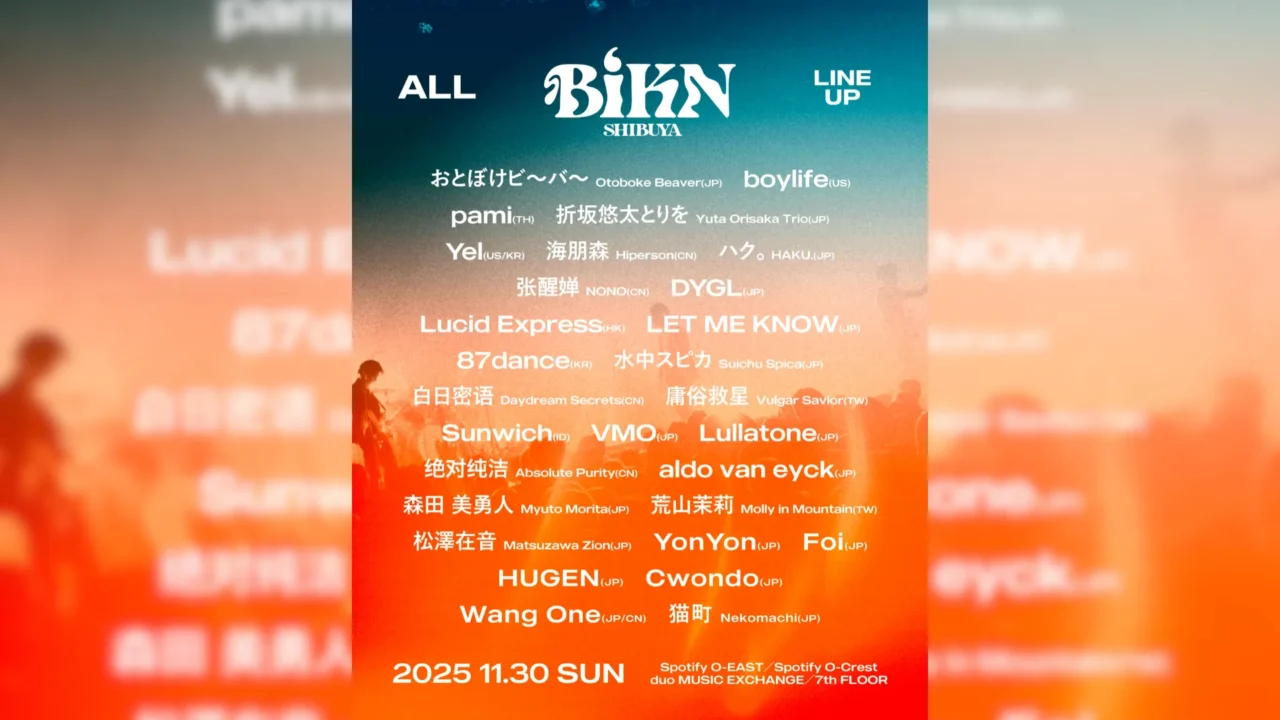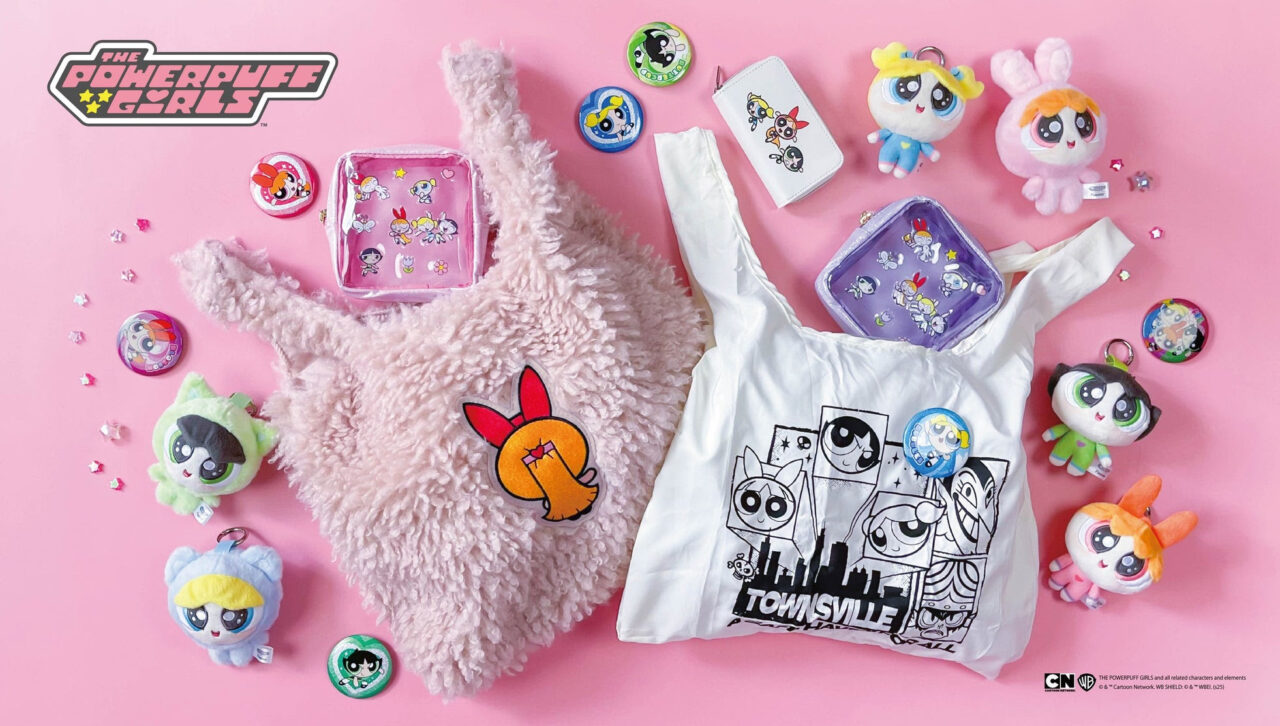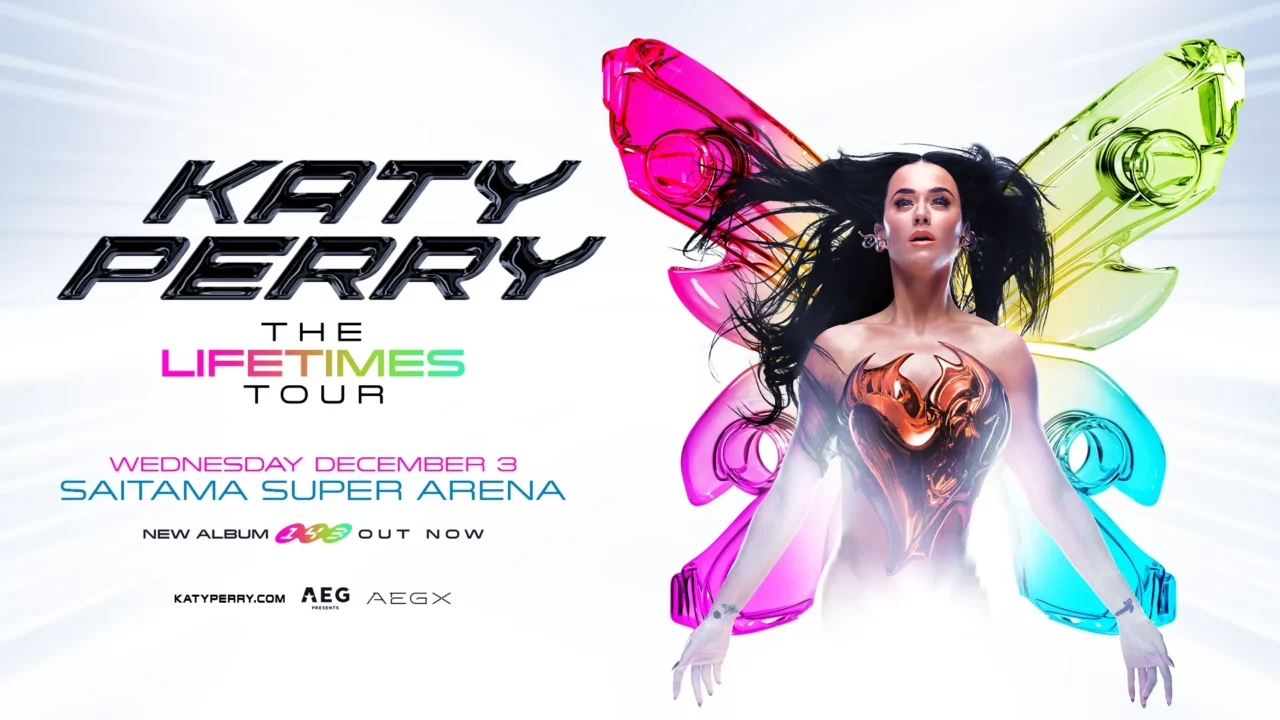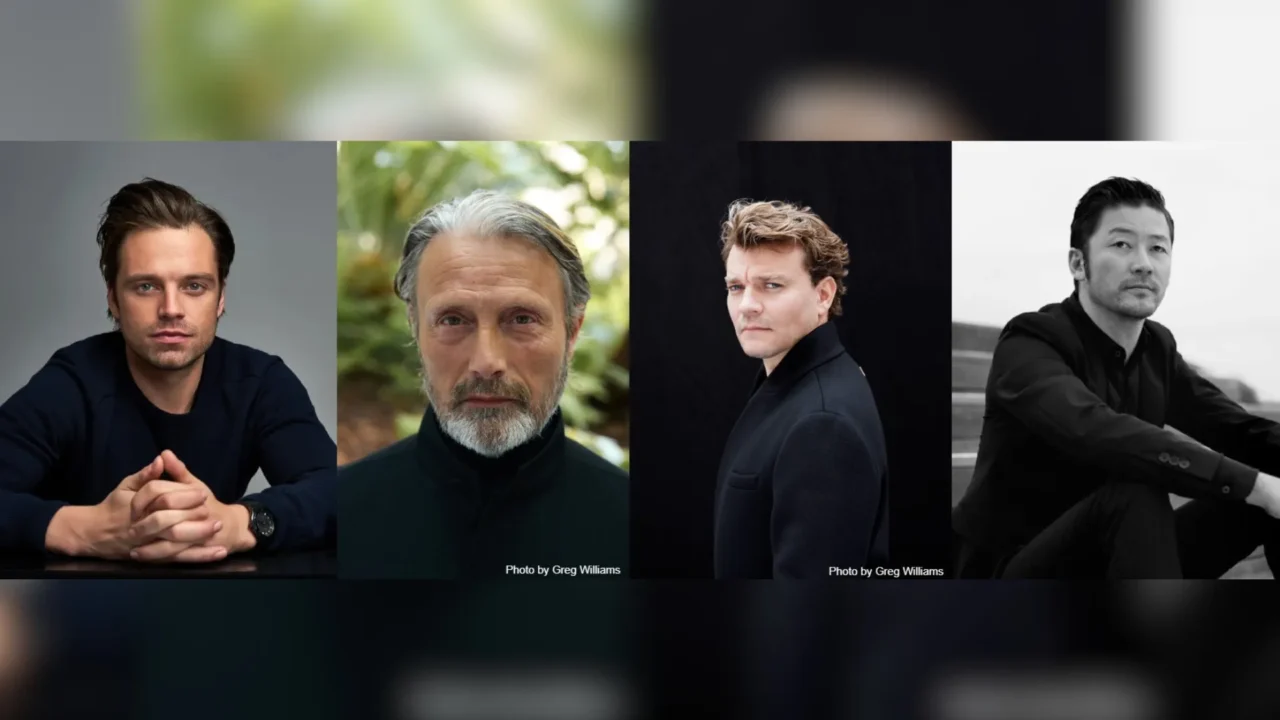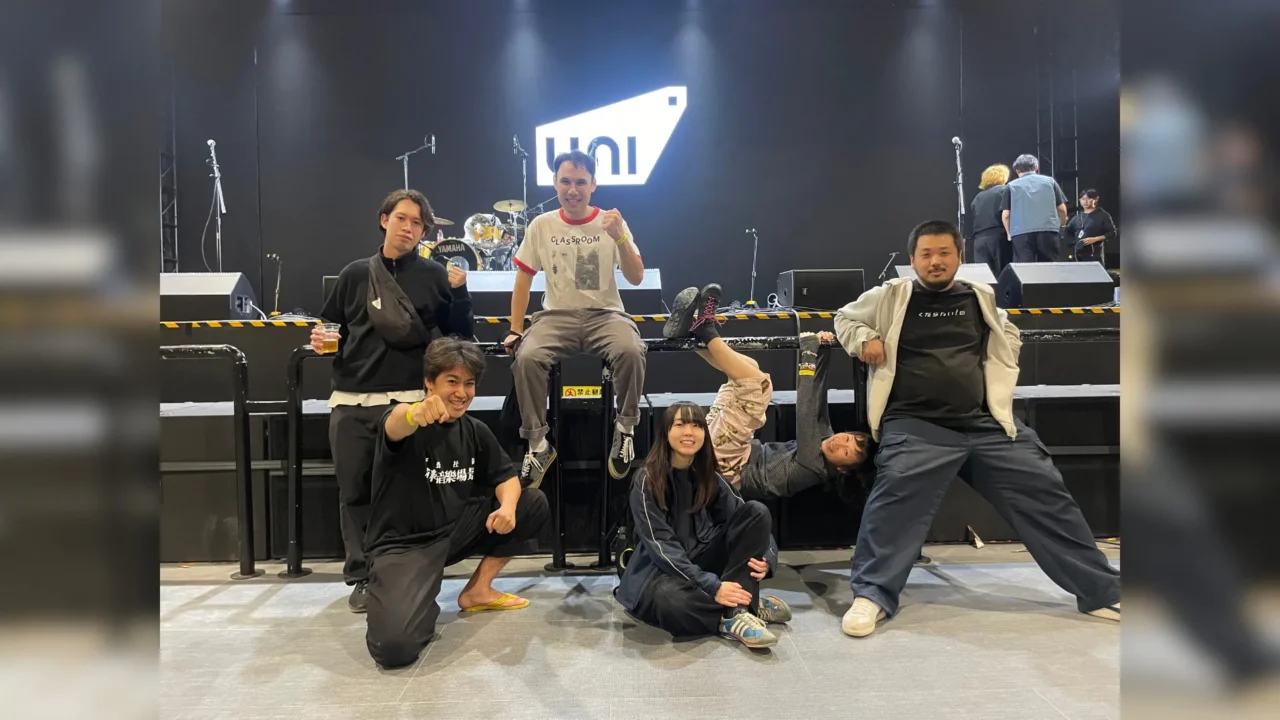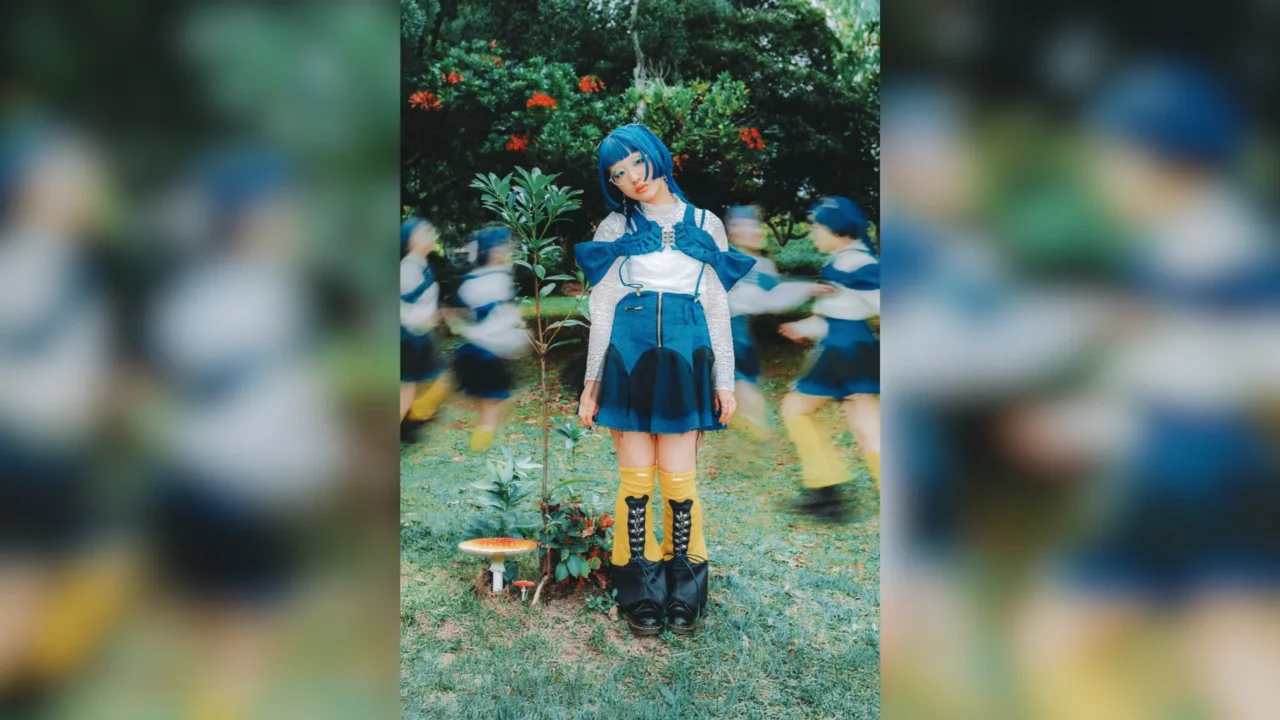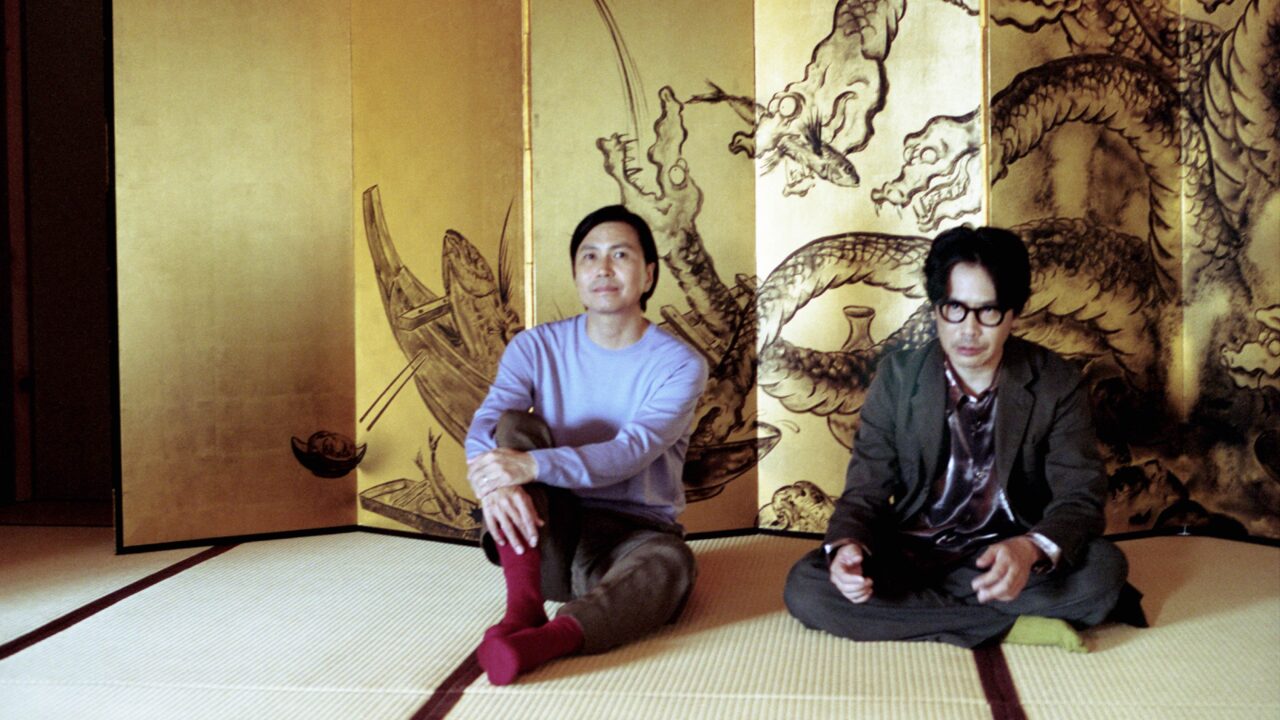The music and camping festival “FUJI & SUN ’23” will take place in Shizuoka’s Mt. Fuji Children’s World on May 13th and 14th. With the concept “Learn and live with Mt. Fuji,” this year marks its fourth installment and the festival provides borderless music and culture at the bottom of the mountain. In addition, a wide range of leisure activities are also available, which offers a sense of community.
cero, a Tokyo-based three-piece band, will return to the festival as the headliner on Saturday. The band will also release e o, their first album in five years, this May. So this is the perfect opportunity to catch the latest version of the band since they last performed at FUJI & SUN four years ago. Described the new album as “almost self-titled album” by the band’s frontman Shohei Takagi, NiEW spoke to him on their latest album, their first performance at FUJI & SUN, and the post-pandemic era.
INDEX
Pursuing cero’s identity even further
– Let’s start with your new album e o, the first album in five years. “Fdf” is the oldest song of the album, released in February 2020. But the album production had to pause during the state of emergency. So I suppose August of 2021, when “Nemesis” was released, was the actual start of the album?
Takagi: You are right. Fdf” was released a little after “Polly Life Multi Soul” and I thought, “It’s about time to start moving a little again,” but that song itself was the first time for cero to deliver music without physical media such as CDs or records. But that song itself was the first time for cero to deliver music without a physical medium such as CDs or records. We have been living in a physical world for so long that releasing a song without a physical medium is a bit old-fashioned, and although no one would write a song like this again, it was something like “Thank you for the physicality”.lol
– I sensed that from the lyrics and the album cover.
Takagi: The first thing that changed with Pandemic was the style of production. Up until now, we had the image of someone making a demo and then writing it up in the recording studio, and “Fdf” was originally a song that was created from a demo made by Mr. Arauchi.
However, I released my solo just before the pandemic, followed by Arauchi’s and Hashimoto’s solos, so I thought that the “someone else taking the initiative in creating” method had come to an end for the time being.I thought that in order to further explore the cero style, it would be more important for the three of us to “get together and create”.
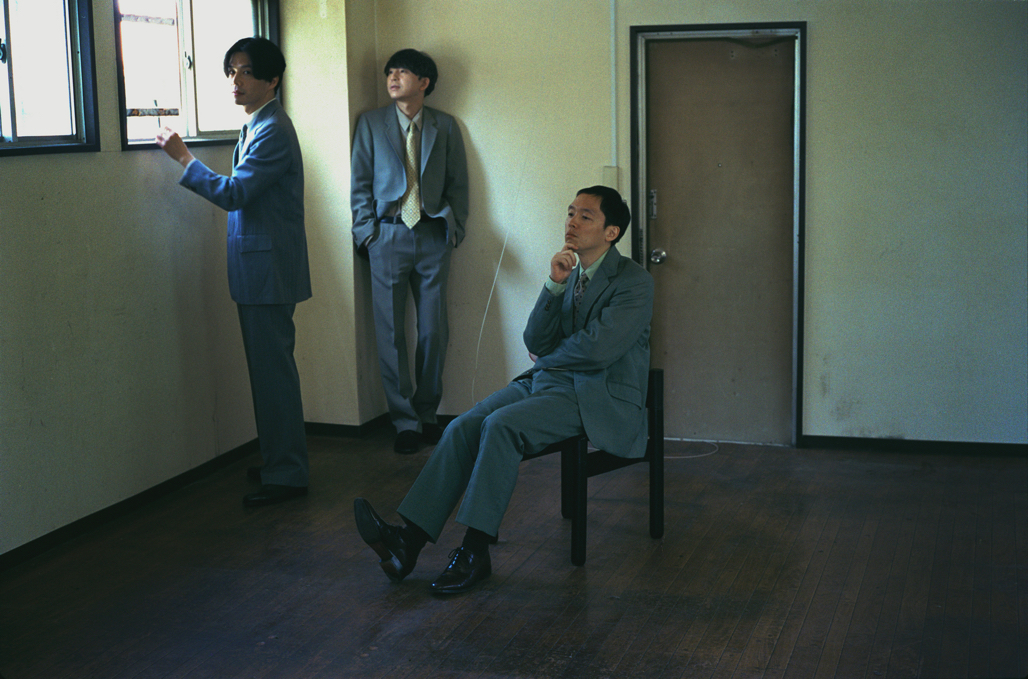
A Tokyo-based band formed in 2004. The three members are Shohei Takagi, Tasuku Arauchi, and Tsubasa Hashimoto. Each of the three composes, arranges, and produces their own music, and they also conduct live performances and music production with supporting members. They have both musical pleasure and storytelling skills, and their future releases and live performances always attract attention.
https://cero-web.jp/
– I see.
Takagi: So we decided to set up a simple studio in an apartment in Kichijoji where Hashimoto used to live. “Nemesis” was the first thing we started working on.
Takagi: For this song, I started with a melody that I had blasted into my phone, and we all expanded the idea little by little. We repeated the process of just getting together and creating without any particular plan. The songs on this album all went through that process.
– So, getting together was necessary even during the pandemic rather than online meetings?
Takagi: Just before the coronavirus pandemic, I visited Mr. Arauchi’s house to work with him for a few days on some music projects, and we had a great time working together smoothly and fluidly. From this experience, I realized that the first thing we needed was a “place to gather”. I felt that as long as we had a place, something would naturally come together, so we came to the conclusion that we would build a base of operations.

INDEX
I was the protagonist, then became a father
– The songs show the shift in the production style. The album gives an impression that each song was made very detailed and less raw band sounds.
Takagi: I think so. There is much less work to do in the recording process, and instead there is much more post-production. Arranging and post-production are the same, and I just keep tweaking and tweaking. Arauchi was by far the one who did most of the hands-on work. …… lol. That is very similar to the way we made the first album. At that time, we just got together and spent about a year making the album, so there was a sense of déjà vu, like “I’m almost 40 years old and doing this again”.lol
– So, you have come full circle?
Takagi: I think it was a big factor that we all released solo works. Now that we have two outputs, we can be more pure about what we should do in “cero”.

– There was no blueprint for “Nemesis,” and the three of you created it freely?
Takagi: Yes, that’s right.We added voices as we thought of them, and it became more choir-like, or we thought, “We don’t need so much bass,” and added it only where it was really needed. The same goes for the other songs, so there is no sense of “who made this” and it still doesn’t feel like we made it ourselves. This is especially true for “Nemesis”.
With regard to the lyrics, as we made several songs, links were created between the words, so in the end it seems as if we were following some sort of plan, but each song is really a disconnected project, or rather, each time we started from scratch. It was like “Nemesis” was “#1,” then “#2” “#3” and so on, and the songs without titles just kept getting mass-produced. There was no blueprint until the very end.

– Each song has a different type, but the album seems to create a sci-fi atmosphere as a whole, more than ever before. All the previous albums of cero had sci-fi elements, depicting the fluctuation between reality and unreality. “Nemesis” is the title for one of the “STAR TREK” movies and cero’s tour last year. The album title e o comes across as the American 3D science fiction movie “Captain EO.” Is there any connection to the post-pandemic society where reality becomes like a science fiction-esque world?
Takagi: If you call it science fiction-like, that may be true. However, I think there has always been an “adventurous subject” in the lyrics of cero’s albums. It has gone from something on the scale of a stroll through a city to a larger stage like “My Lost City” or to the underworld like “Obscure Ride”. But that has changed a bit since “Polly Life Multi Soul”. Before that, I had a child, and I was in the child-rearing phase of my life, so I was the main actor in the adventure until then, but that role was gradually taken over by someone else, and with “Polly Life Multi Soul” I think I became the main actor waiting for something to come along.
I did not draw such a blueprint this time, but I think “Nemesis” is also from the perspective of the sender. Therefore, the linear time line and linear worldview, which is like opening something up and moving forward, is gradually disappearing. I personally feel that such a process has been taking place in cero of late.

– I see.
Takagi: Then, the form of words is gradually becoming more lyrical. It used to be more lyrical, but now it is more lyrical. So, yes, there are some science fiction-like motifs, but they are just a way of saying something, and I thought it was more metaphorical when I listened to the finished product.
INDEX
Self-titled album cero felt right
– Why did you name this album e o?
Takagi: I was very worried about it. We didn’t have a blueprint until the very end, so we didn’t have any ideas for the title.lol There was a possible title such as “TREK” the title of the tour, but I decided not to use a title that would be a receptacle for that kind of image because it would reinforce the epic angle I mentioned earlier too much.
We thought it was an album that said, “This is cero” so we thought it would be okay to use the self-titled “cero” but that would be too unconventional, so we adopted a sense of playfulness that we had been playing with a lot during the production process, and ended up with “eo” with the “c” and “r” eliminated. I took in a sense of playfulness, as I had done so many times during the production process. When you hear the word “eo” people of a certain generation may think of “Captain EO” According to one theory, “eo” means “dawn”.
– Apparently, the word came from Greek mythology.
Takagi: That’s right. I thought it would make a great meaning and be easy to design visually. So it is almost like a self-title.

– You guys made an album again the same way as the first and realized “that’s how cero makes albums”?
Takagi: It was really a very similar production period to “WORLD RECORD”. Of course, many things have changed, like Corona, children, dogs, cats, etc [Laughs].

– This album feels similar to the first album in terms of sampling. However, this album has many game music sounds like hyper pop, and the cover is reminiscent of 8-bit. Did you have any particular image in mind?
Takagi: Yes, there is a lyric in the first song that says “a terribly rough game screen”, but that’s just “if you ask me”. This time, we are only impressed by what others say to us, and we ourselves are the ones who discover things.lol But, well, if I were to force myself to continue with the impression that it is like 8-bit, the structure of micro parts forming a macro structure, like a bit picture, could be said about the content as well.
– Micro and macro?
Takagi: In terms of the structure of music, many pieces of music have a section with a relaxed rhythm and a section with a detailed rhythm, both of which are inherent in the distortion. If we consider fine-feel rhythms as micro, then there is a busy and speedy time flowing in that world. On the other hand, macro-feel rhythms have a relaxed sense of time. I think the fractal structure of micro and macro interweaves is vaguely shared, and I think the language was influenced by this structure to no small extent.
– Could you be more specific?
Takagi: In this world, the structure seems to be the same, but the macro world and the micro world operate under different rules. I think such structures are simple but interesting, and I think I spent a lot of time observing them in my work. History moves in the same way. Macroscopic movements at the national level determine history, but in the microscopic world, there are many more things happening, but as time goes by, only the macro events are adopted and the micro events are discarded. But they are not lost, and they can continue to exist if someone observes a trace of them, even if it is a small newspaper article.
I’m not going to go into the details, but I think it has something to do with quantum mechanics, and I personally wanted to include something of that interest in the content of the book.

Takagi: But I don’t think it’s a good idea to explain everything from one to ten, saying “this is how it is and this is how it is”, and music can exist in a vague way, or music is the only way to package such things in a vague way…. is all an afterthought.lol I think that I can listen to the finished work again and critique it in that way, and that’s what I think when I appreciate it myself.
– In 100 years, the past three years could be just “the pandemic,” but there were many micro-movements within that three years. But music allows us to preserve the footage of those movements, look back on them, and see the future from the past.
Takagi: That’s right. The bit painting I mentioned earlier is a micro and macro structure, but the artwork for this project is actually a textile. But the structure is the same. If you take one micro point, it is just a color, but if you look at it from a macro perspective, it becomes a single picture. I think this kind of structure is a characteristic of this album.

INDEX
Singing Japanese is important
– One of our goals as NiEW is to publish English and Chinese articles for a global audience. When making music, do you have a global perspective?
Takagi: I think Arauchi probably faces the notes with that in mind, but I don’t think I am very conscious of it. But if I may say so, I think it is important for me to keep making music in Japanese. For example, Brazilian music that the three members of cero like is mainly sung in Portuguese, and yet there are many Brazilian songs that have become international classics. Moreover, if it were not in Portuguese, that kind of music would not be born, and I think that the music becomes unique to the region by being guided by the language.
In other words, Japanese music should be able to be more open in this way, but by the 1990s, a kind of formula had been completed, and there is a reluctance to leave that formula. In the world of rap music, there have been many attempts, but I think there is still room to use the Japanese language in singing as well as in rap music. Even if you don’t include Japanese instruments as a top feature, you can still feel Japanese-ness and Asian-ness in any number of ways, which is exactly what Ryuichi Sakamoto and others have been doing around the world. I thought that continuing to do so would ultimately provide an opportunity to think about global music.

– cero has always pursued an original flow in Japanese. Was there anything you focused on in the new album? The overall impression is more emotional than descriptive, and the singing is softer.
Takagi: Hashimoto apartment is not very loud, and I think that feeling was carried over to the main concert. Also, Masahito Komori, who engineered this project, really cared about my voice, and I think he understood the delicious parts of my voice.
In the past, cero’s stance was “Singing is secondary”. The engineer understood this and said “You are people who want to show the whole structure of the song rather than the singing”. We thought that was fine. But this time, when we did it without discussing it with Mr. Komori, his voice came out more loudly than any other singer in our history, and that was very fresh for me. Especially “Nemesis” is a song that is mainly sung, so I thought “My voice is leading this song. It’s pretty good” and I think that had an impact on the overall sound.

– How you approach the voice is an essential global trend in sound design in the 2010s.
Takagi: Indeed, it is something like after ASMR. Komori has worked with many people, including Hikaru Utada, and I think he really thought about what kind of balance would be best to install in cero, while keeping the trends in mind.
– I’m curious to see how this album will be received in the world.
Takagi: I feel that this is the most universal work among our past works, so if someone were to ask me, “Which one should I listen to first?” I would recommend “eo”.”WORLD RECORD” and “My Lost City” were made in close connection with my own surroundings and things in Japan, so I was a little doubtful that people would understand their merits if they heard them without that context, but even if you remove all of that context from “eo” I think there is still room for people to say “That’s cool”.

INDEX
Being alternative is the way not to be exploited
– cero performed at the first “FUJI & SUN” in 2019. Do you remember anything from the day?
Takagi: I had the biggest impression of seeing Hermeto Pascoal, and it was the most interesting. I happened to have a high school friend who didn’t seem to listen to Hermeto at all, but he liked camping, so he came to the concert with some people from his company. I was like,”Wow, that’s great!” People who would never have met without such a place were meeting each other. I was happy to see that, even though I was a stranger to the event.
– The organizer curates the lineup with their intention, and there’s something new for the audience, which is an ideal way of a festival.
Takagi: It’s fun to have a lot of stages, but recently there are more and more festivals that are more focused, and I like festivals like “FRUE” that focus on a particular area.
– Due to the pandemic, the meaning of “gathering” changed a lot. The mindset of festival-goers might have changed, too. What kind of places do you think are needed at times like this?
Takagi: In 2020, I participated with cero in an event to watch a live performance like a drive-in theater. In order to protect distance, we would drive up to the front of the stage and perform live in a state like a car lot sale. It was a surreal sight and one of my unforgettable memories. If it rained, we could just get in the car, and there were quite a few advantages, such as letting the kids sleep inside, leaving our luggage there, and so on.

Takagi: As Corona has gradually converged, this type of event may be forgotten in history, but it would be fine to continue to have a “car area” at regular festivals. I am sure that all festivals and live houses have reconsidered what it means to “gather people,” and I think it would be beneficial to not forget what we have returned to and undo what we have done, but to leave behind what we have discovered and felt in the process and move forward.
– It’s important to create new places in the future with the lessons we learned in the past three years.
Takagi: Of course, there are many advantages to live broadcasting, but I also wonder if it’s not a good idea to place more importance on the delivery than on the audience in front of you. The more ways there are to do things, the more we need to make our own judgments. If we do not always keep in mind alternatives, we will be exploited in no time. I would like to continue my activities from now on, while properly confirming the axis of my work, which I have reconsidered after the coronavirus pandemic.
『FUJI u0026 SUN ’23』

May 13, 2023 (Sat) Fuji Kodomonokuni, Shizuoka, Japan
OPEN 9:00 / START 10:30
Performers:
SUN STAGE: never young beach, Yuta Orisaka (band), Hanaregumi, EGO-WRAPPIN’ (Acoustic set), cero
MOON STAGE: Peach Iwasaki, Yoshiwara Gion Taiko Sessions, TOP DOCA, THE SIDEBURNS with Martin kinoo, Yuga, Kimijima Ozora
May 14, 2023 (Sun) Fujiyama Kodomonokuni, Shizuoka, Japan
OPEN 8:00 / START 9:00
Performers:
SUN STAGE: ROTH BART BARON, Bread & Butter, Kaela Kimura, Sugashicao with FUYU, ASIAN KUNG-FU GENERATION
MOON STAGE: Lil Mofo, Saho Terao, Takuro Okada, Mahito the People
Official site: https://fjsn.jp/















